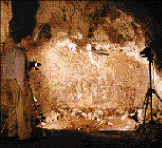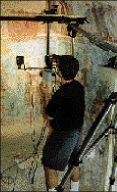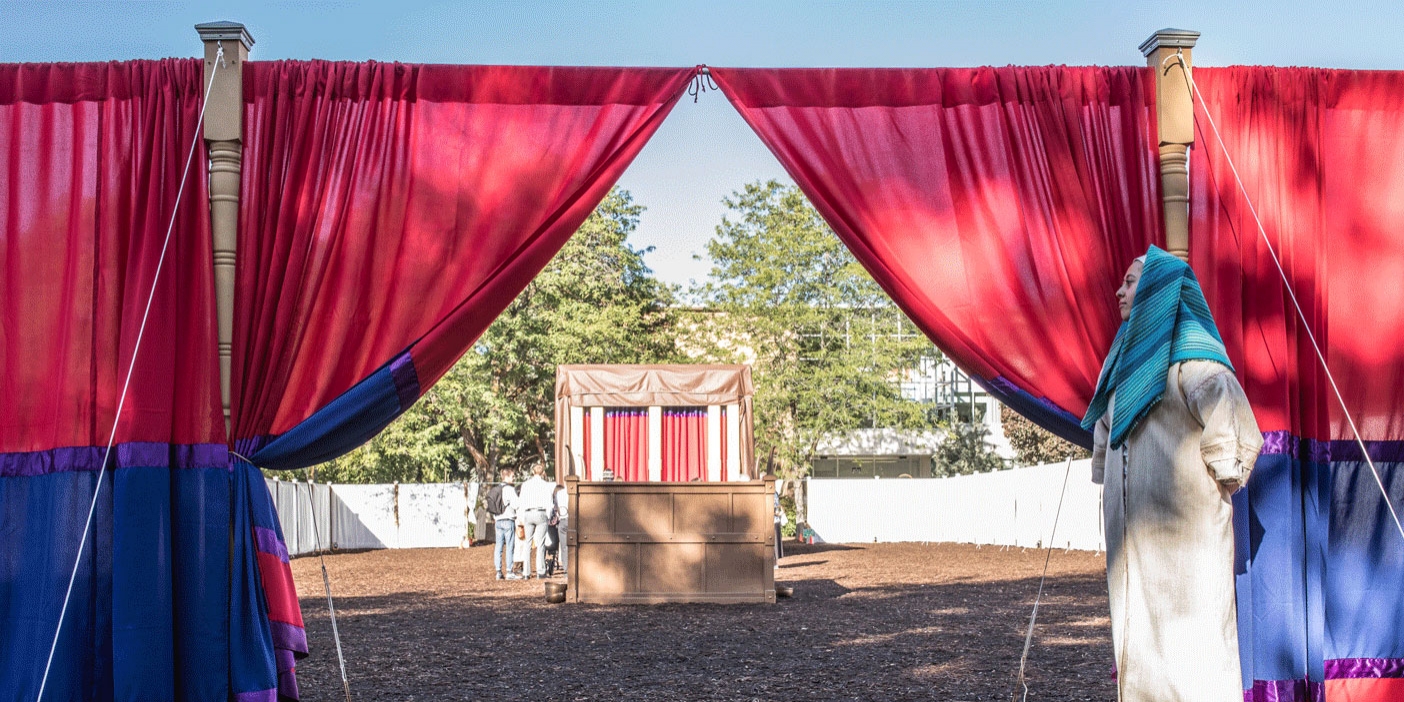By Charlene Winters
Deep in the rain forests of eastern Chiapas, Mexico, close to the border of Guatemala, a small ancient city lies in ruins. In three chambers of the ruins, hundreds of Mayan dancers, musicians, warriors, and dignitaries embellish the walls as the only monumental paintings to survive from the late classic period (between a.d. 600 and 850).
The site is called Bonampak (the approximate Mayan equivalent of “painted walls”) and represents the brilliant work of master artists and superior calligraphers. The paintings became known to the modern world in 1946 when two Mayan descendants led a photographer to the site.
A group of BYU professors have been part of a larger team, led by Yale art history professor Mary Miller. Together they examine art treasures on the walls of these ancient ruins with modern imaging technology. Through color and infrared photography and video and multispectral imaging, researchers are breathing new life into antiquity as they resurrect details in faded and encrusted images that can no longer be seen with the naked eye.
Their work is revolutionizing the way these paintings–threatened by time and decay–can be studied. “We need to preserve a record of them and now can do so in a way that approximates how they looked originally,” says Stephen Houston, professor of anthropology at BYU. “These may well be the most important pre-Columbian paintings in the New World, and we must document these masterworks before they disappear or become irreparably damaged.”
When researchers used the technology at Bonampak, vague images concealed by centuries of weathering sprang to life. Charging warriors and their bleeding captives leapt from the walls testifying of vivid war and sacrifice scenes. Musicians shook their rattles and struck turtle shells with antlers in festive scenes. Kings celebrated their triumphs.
Houston is co-director of Miller’s scholarly team, whose charge is to complete what they call the Bonampak Documentation Project. The art historians, archaeologists, engineers, and computer scientists that compose the team have been able to re-create colors as well as look through the paintings’ original pigments and see the underdrawings that reveal the original Mayan lines. As these glyphic details have come into focus, Houston says, “They have enriched our views of the paintings by a factor of at least five. They were deliriously exciting the first time we saw them. Our eyes are opening to new possibilities–far beyond biological limitations.”
The principal engineer on the site has been Gene Ware, BYU associate professor of electrical and computer engineering. The applications of cutting-edge machinery by Ware and BYU College of Engineering and Technology dean Douglas M. Chabries help researchers understand which paints and pigments were used and how they were employed in ancient art.

BYU engineering associate professor Gene Ware prepares equipment to allow researchers to examine faded Mayan drawings dating back more than 1,000 years.
“It is fairly common in conservatories to look at paintings using infrared wavelengths,” Houston says. “We use infrared because those are the wavelengths where most pigments become transparent. What Gene has been able to do is transport the equipment in a manageable weight and take it into remote places.”
According to Steven Booras, technical operations manager for “FARMS” (Foundation for Ancient Research and Mormon Studies) and a Bonampak team member, four kinds of imaging occurred at Bonampak. Photographer Justin Kerr did conventional color photography; David Wooddell, a senior researcher with the art department forNational Geographic, used infrared photography techniques;Ware engineered infrared video cameras to allow immediate results and data; and Booras and Ware worked with digital camera imagery. Information gleaned from the infrared film will enable artists to correct the scanned conventional photographs to approximate the paintings as they appeared 12 centuries ago.
“As far as we know, this project is the first time a combination of color and infrared photography, infrared video, and multispectral imaging techniques have been applied to New World archaeology,” Houston explains.
Part of Houston’s responsibilities on the project included incorporating 15,000 images collected from a “video prospecting” scan of the walls into a mosaic. From the mosaic he hopes to find meaning in the new details. “The technology is clarifying our problems of interpretation,” he says.
Documenting their work is imperative because of the fragile condition of the world-class treasures. “Some people have touched the walls (at Bonampak), and body oils have penetrated the limestone,” he says. “Others have thrown kerosene on the walls; it enhances the images but also damages them.”
Within a decade of the Bonampak discovery, the National Institute of Anthropology and History cleared the acropolis at the site, stabilized its structure, and erected a roof over the building containing the murals. The site remained like that for about 30 years.
“Once the walls were kept dry,” Houston says, “the salts that had accumulated there adhered to the paintings, making them nearly impossible to see. A few years ago, the Churubusco Center for Conservation scraped off some lime incrustation and filled in holes, but this process of cleaning, no matter how careful, affects the paintings. Yet with our imaging techniques, we can see beyond the obstructions.”
BYU’s work on this and other imaging projects has led to the formation of an archaeological imaging laboratory within the College of Engineering and Technology. This laboratory will serve as a BYU focal point for national and international imaging as it investigates and applies archeological imaging techniques to ancient murals, codices, inscriptions, and papyri.









